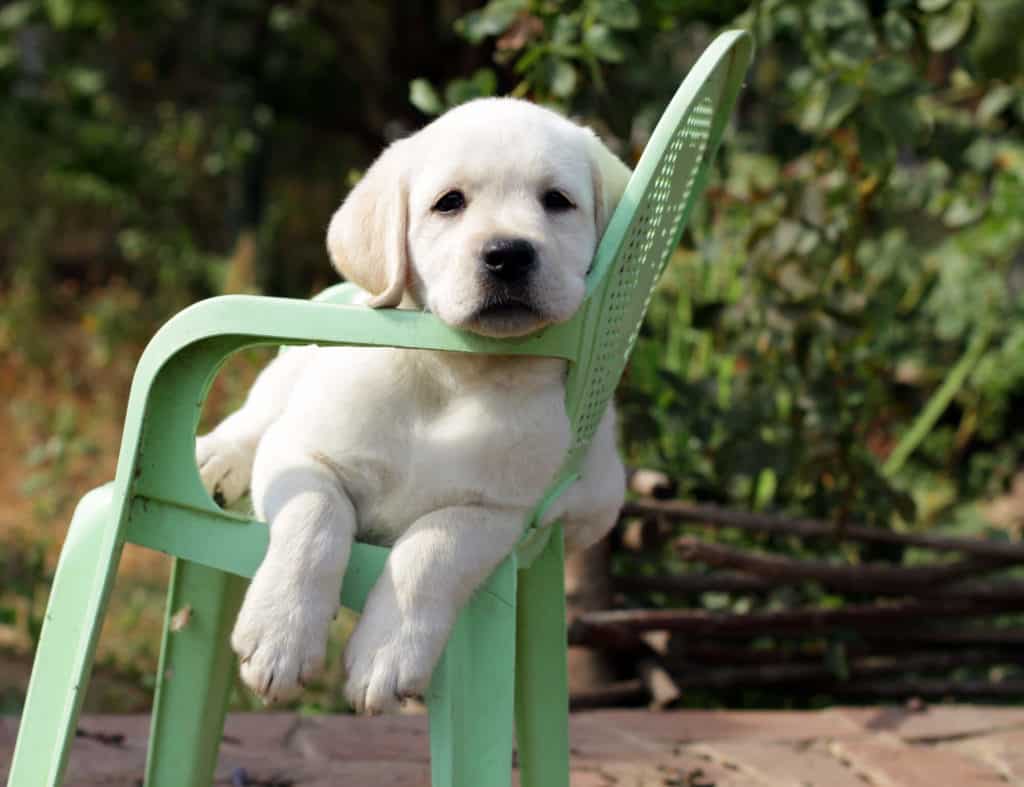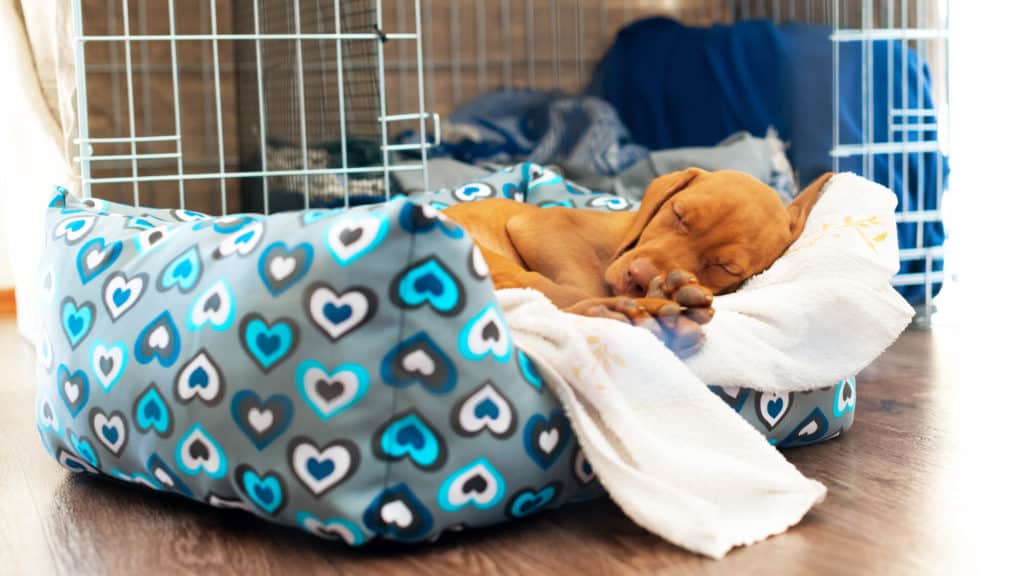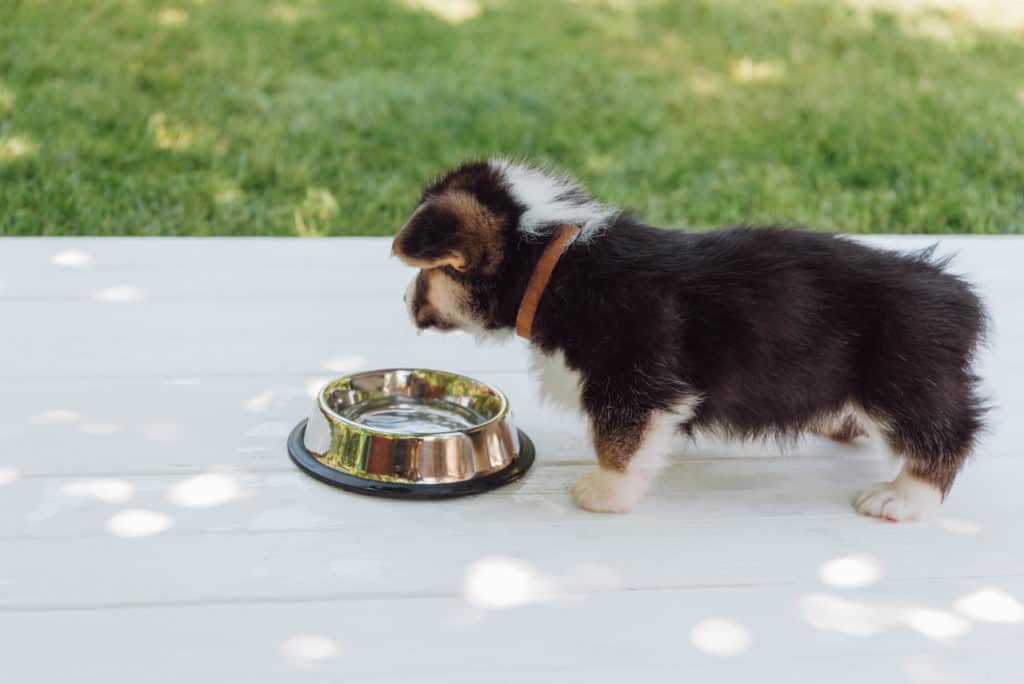Because the best time to potty train your pup is around 14 to 16 weeks of age, it can be a bit intimidating to housetrain a 6-month-old dog.
The good news is, it’s not an impossible task. You just have to follow a good training plan, use positive reinforcement, and have plenty of patience and persistence!
The steps below explain the entire process.
Step 1: Maintain a Schedule
Dogs, and most pets in general, are creatures of habit. So, if you train your puppy to go to the potty at the same time every day, he’ll soon get used to the routine and you can expect fewer accidents.
As a general rule, six-month-old pups should be able to hold their pee for six hours before they need to go to the toilet. Knowing this bit of information gives you an advantage; you can base your schedule around your puppy’s bladder capacity!
Here’s when you should take your pup outdoors to the potty (you can create your schedule based on these guidelines to match your own daily routine):
- Right after waking up
- After eating, drinking, or playing
- After getting up from a nap
- After spending some time in the crate
- Before going to bed
Remember that it’s only possible to maintain a steady potty schedule if you regulate the feeding times. They both simply go hand in hand, so make sure they’re in sync.
Step 2: Choose a Certain Spot for the Potty

Another part of your potty training is to establish a connection between your dog and the spot where you want him to do his business. By doing that, your pup will know it’s time to pee once you take him to this exact place.
How do you form this link?
Well, take your pup to the same spot every time he needs to relieve himself. After he’s done, allow him to explore the area and become familiar with the scents and textures.
Ideally, you should pick a spot with a distinct texture, like rock or grass, so that it’s easier to associate with potty time.
Another cool trick is to use the same verbal command every time you take your puppy to the designated potty location. The more times you relay “potty” to him, the easier it should be to make the connection.
Remember to always reward your pup if he does his job successfully and understands your commands. Here are a few ideas for rewards:
- Take him on a walk afterward
- Praise your pup and say his favorite words of encouragement
- Shower him with pats
- Give him a tasty treat
Do this right after he’s done so that he can associate it with the action.
Helpful Dog Health Resource:
Note: Our Health is #1 Priority. It should be no different for your dog. But you need to help him. The Ultimate Guide to Dog Health is the answer. This handy guide will help you recognize the symptoms of the health problems above. Get the knowledge to stay ahead of these terrible issues that can rob your lovely dog from vigor and life. Help your friend make it to 14 yrs+ without pain and suffering.
Step 3: Never Punish Your Pup for an Accident
Accidents happen, and that’s okay, but your reaction to them is what can boost or set back your pup’s progress. We know that finding out that your puppy has peed on the carpet is frustrating, but your dog simply won’t realize he’s done something wrong.
Shouting or displaying a negative reaction can have bad effects on your little doggo. He won’t understand what you’re upset about, and instead, it’ll make him afraid of you.
So, how should you react to an accident?
- Take your puppy to his potty spot outdoors right after finding out about the accident
- Command him to finish his business there
- Give him a treat if he does so
- Clean the soiled area thoroughly to discourage him from returning to it
Step 4: Crate Train Your Puppy

Don’t underestimate the power of crate training and how effective it can be in potty training your little furry friend.
See, puppies have an instinct that prevents them from soiling their sleeping areas. Therefore, if your pup has crate training and considers his little home a comfortable spot for sleeping, he’ll hold off on soiling it.
Whenever you can’t supervise your buddy, you may want to keep him in his crate for a couple of hours for some quiet time. Just make sure to take him outside to the potty as soon as you let him out of the crate.
Step 5: Feed Your Dog a Healthy, Balanced Diet
Besides maintaining a suitable eating schedule, remember to make sure that your puppy’s diet is healthy and tailored to his needs.
You’ll want to give him food that’s high in protein, fiber, and fatty acids and low in fat and carbs. Not following the right diet might lead to more instances of an upset stomach, which will need more bathroom breaks.
If you’re not sure about your pup’s diet, you should consult a vet to give you their recommendation on the best dog food for your furry friend.
They’ll also let you know about the right portions to feed your pup based on his age and weight.
Step 6: Remove Your Puppy’s Water Bowl a Couple of Hours Before Bedtime

Sure, puppies will do their best not to soil their beds. But sometimes, the urge can be too high to hold their pee in, especially if they’ve had some water before going to sleep.
This is why you should do your best to prevent this scenario from happening. About two hours before bedtime, take away your pup’s water bowl and call it a night!
Still, your canine friend might need to go to the toilet at night, and he’ll let you know by waking you up. In this case, turn on a few soft lights, just enough to see, and take him outside for the potty.
Don’t give him your full attention or start talking to him, or else he’ll become wide-awake and ready for playtime!
Helpful Dog Training Resource:
For help with training your dog, you should take a look at The Online Dog Trainer by Doggy Dan. Doggy Dan is an expert Dog Trainer based in New Zealand. His online resource contains Hundreds of Excellent Dog Training Videos that will take you step-by-step through the process of developing a healthy, happy well-behaved dog.
Step 7: Stay Patient and Positive
Remember that the key to successfully potty training your doggo is persistence and patience. Also, you should stay positive all the way and avoid giving off any negative vibes that your pup can detect.
On the other hand, positive reinforcement has been proven to be the most effective method in dog training. So, keep that in mind while working with your pup, and eventually, your efforts should pay off!

Paul has been creating content for the dog niche for many years. The information he shares comes his first hand experience growing up in dog lovers household and then owning multiple dog breeds of his own as an adult. Paul enjoys doing the hard research to collect, analyze and present our dogtemperament.com readers with the best answers to their questions.